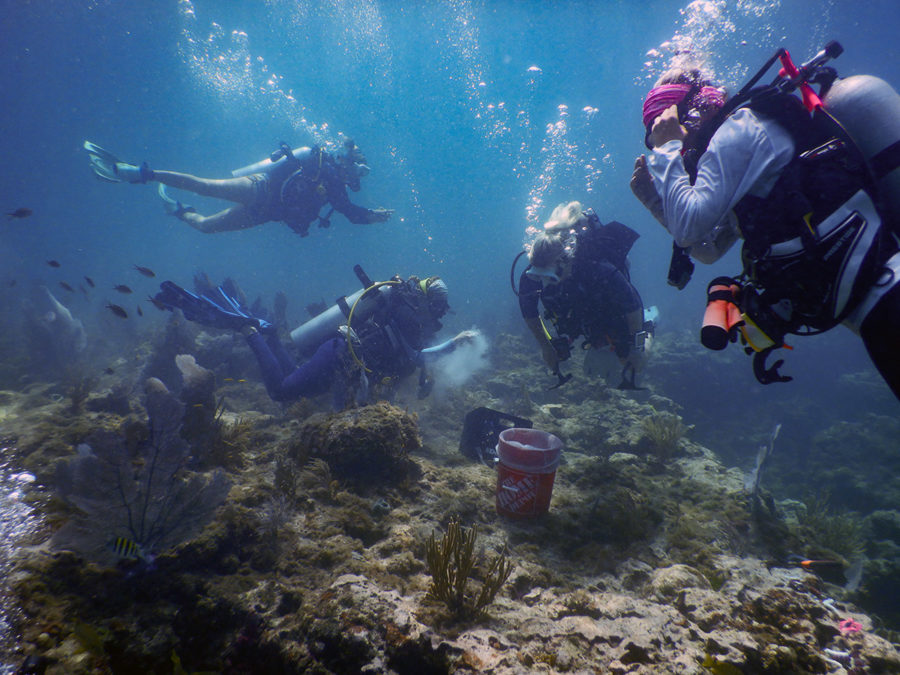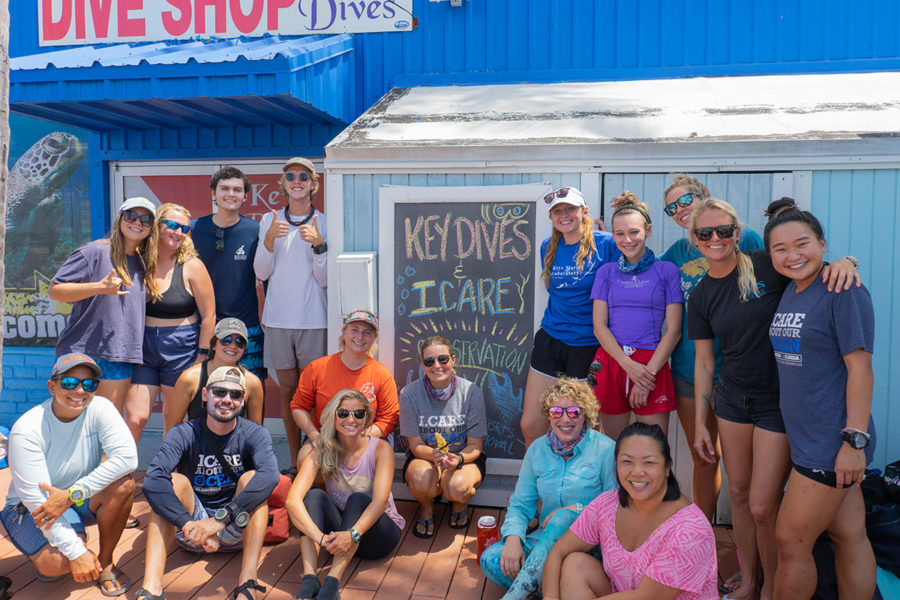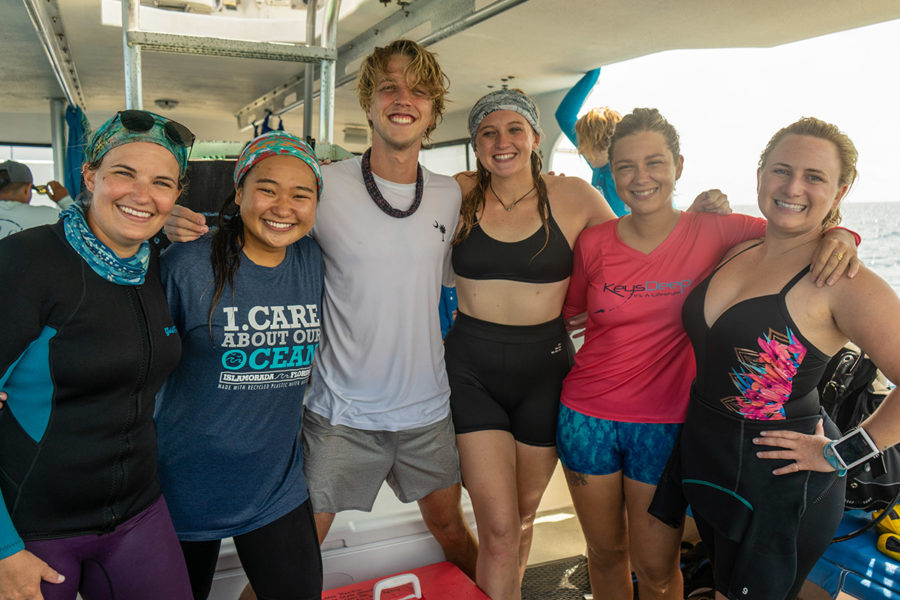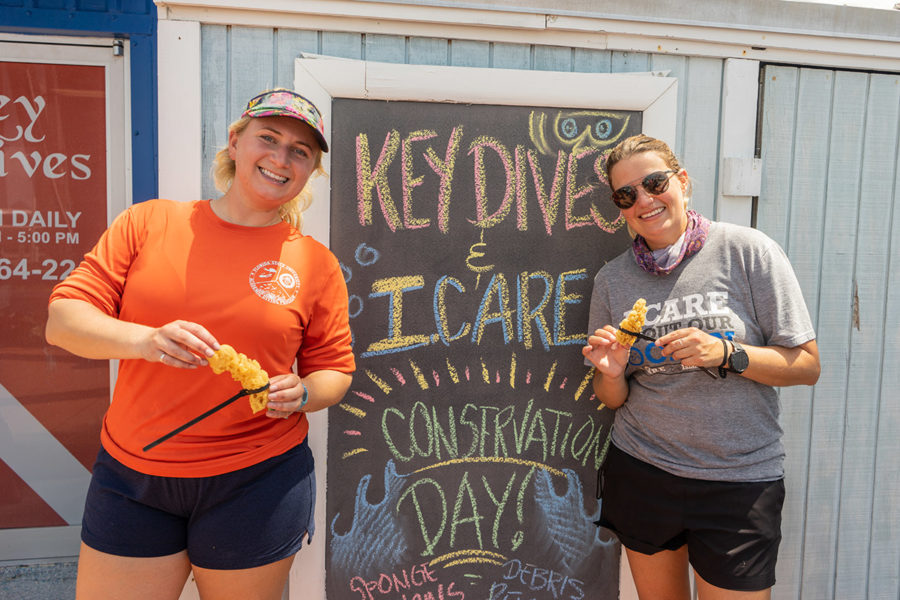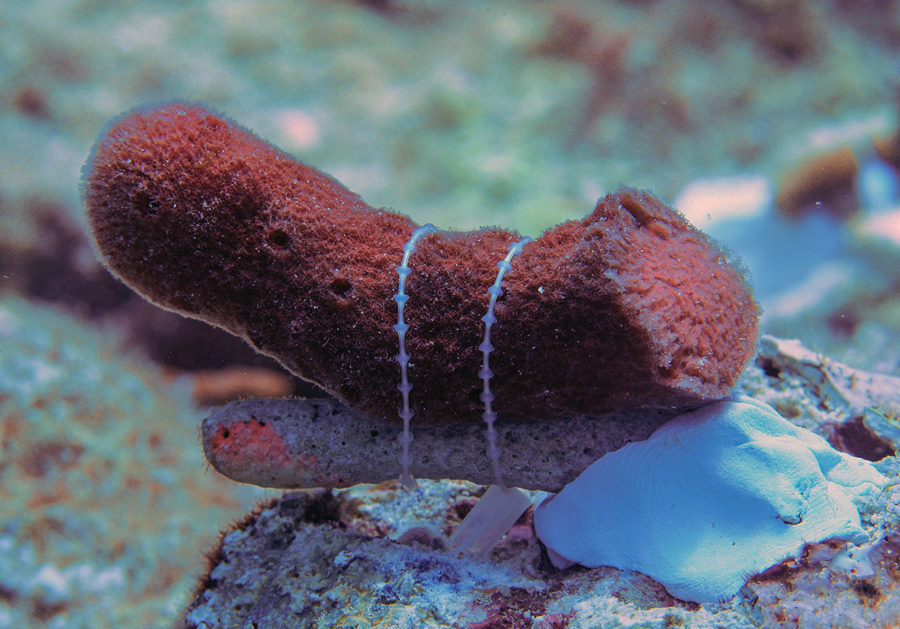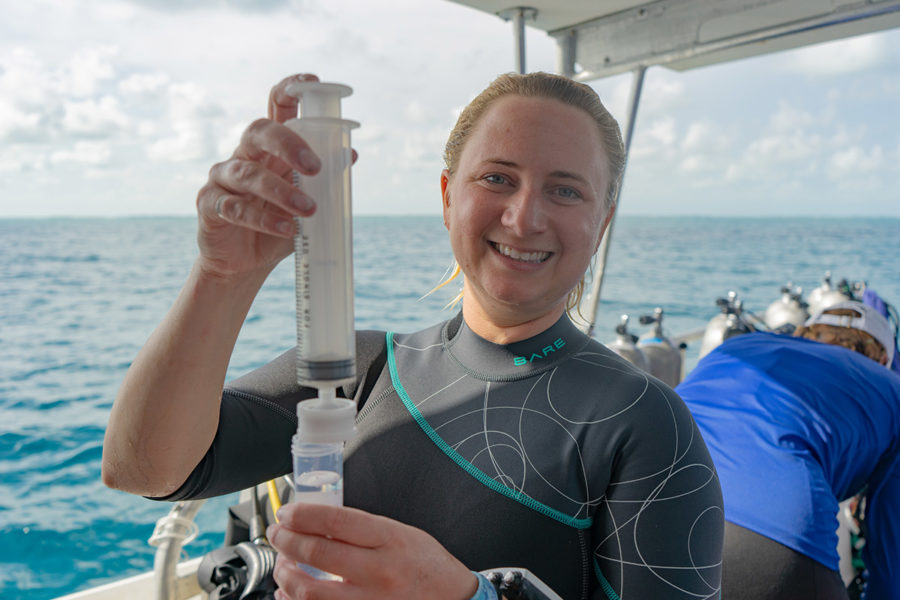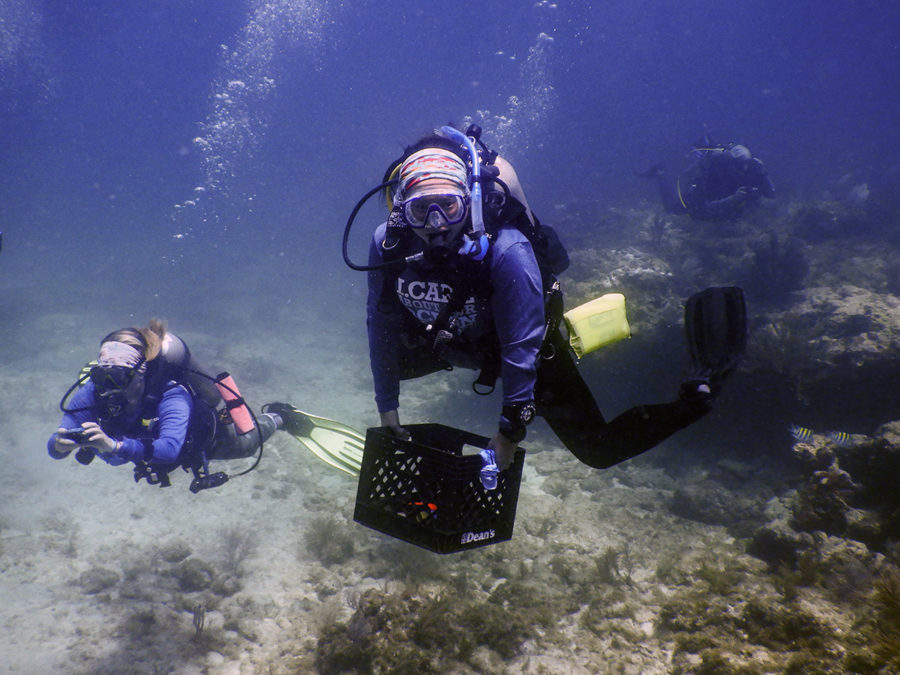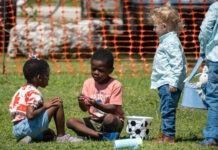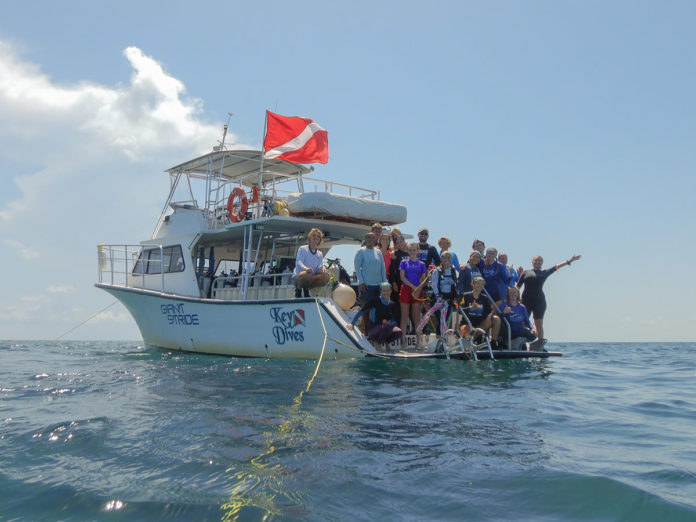
While Islamorada is a few worlds away from Bikini Bottom, the cartoon home of SpongeBob SquarePants, it doesn’t mean that there isn’t still a connection. Take Bobbie Renfro, for instance. She’s a Ph.D. candidate at Florida State University in the biological sciences. With a specialty in coral reef ecology, Renfro, who is lovingly called “Sponge Bobbie,” has a focus on — you guessed it — sponges. Now, she’s using her research with these underrated marine animals to bolster our local coral restoration efforts.
“Sponges are hugely important and little known,” Renfro said. “They’re probably even little-studied, but they keep the ecosystem intact.”
As part of her research, Renfro has spent the summer outplanting sponges on Islamorada reefs.
“We’re really taking restoration seriously in Islamorada,” she told the Weekly. “We’re restoring the entire ecosystem to add to the coral restoration work that Kylie has already done.”
The “Kylie” she refers to is Kylie Smith, co-founder of I.CARE, the Islamorada nonprofit organization galvanizing the community behind coral restoration efforts on its most famous reefs. Every week, I.CARE partners with local dive shops and businesses to plant endangered corals back onto degraded reefs. The hope and the goal is that these will continue to grow and stabilize the coral reef ecosystem on which the Keys economy and way of life rely.
And, the “entire ecosystem” that Renfro mentions really does mean the entire ecosystem. NOAA, through its “Mission: Iconic Reefs” endeavor, hopes to restore not just corals, which Smith and her team at I.CARE are working feverishly to do, but also sponges, invertebrates and other organisms that complete a tropical reef ecosystem. Hence, Sponge Bobbie comes to the Keys.
To drive the point home, the marine biologist explained how sponges and corals are ecologically connected. Sponges serve three critical functions for corals and the reef, she said. First, they act as the “Brita filter” of the reef, ensuring that our Keys waters remain infamously crystal clear. Sponges naturally filter out pollutants and toxins from the water, and other organisms like corals benefit from being around them.
Sponges also act as “glue” on the reef. They grow on the seafloor and around corals, holding sediment together, buying time for slower-growing corals to permanently attach. This also helps corals stay affixed through heavy wave action, hurricanes and more.
Additionally, this function helps newly-restored coral fragments. In one study Renfro cited, survival rates of coral outplants plummeted from 96% to 60% after the experimental removal of sponges nearby.
Finally, Renfro noted, sponges also provide substrate, habitat and even sustenance for many iconic Keys critters.
This summer, Renfro and Smith worked together to restore 350 sponges onto Islamorada reefs. They focused on three species of branching sponges because these naturally break up in storms, land on reefs and regrow from those broken pieces. It’s a very similar mechanism to the one that coral restoration practitioners exploit in their work.
“We chose sponges that naturally fragment and grow because those are already good at binding corals together,” Renfro said.
The restored sponges are secured to the reef using a simple mix of zip ties, marine epoxy and an old piece of dead coral. Eventually, after the sponges attach to their coral pieces, the zip ties will be cut off and removed from the reef.
The goal is to monitor these sponges and the ecosystem benefits they confer and to expand this research next year.
In expanding on why she loves sponges so much, Renfro emphasized that the sponges’ biggest job right now is to be the glue so that outplanted corals have something to stick to.
“We at I.CARE take a community-wide approach to restoration, when it comes to doing the work and rebuilding a functional ecosystem,” Smith told the Weekly. “I’ve learned so much about sponges over the last few months and how important they are and the role they play in the ecosystem to stabilize the structure for future coral outplants.”
As the teams finished, one of the divers on the boat commented, “So many people down here are invested in bringing this ecosystem back. It’s really inspiring to see and be a part of.”











